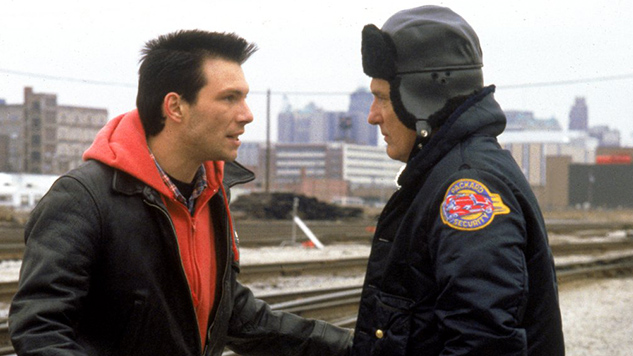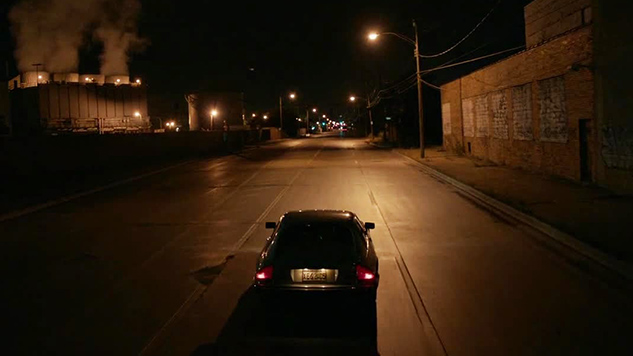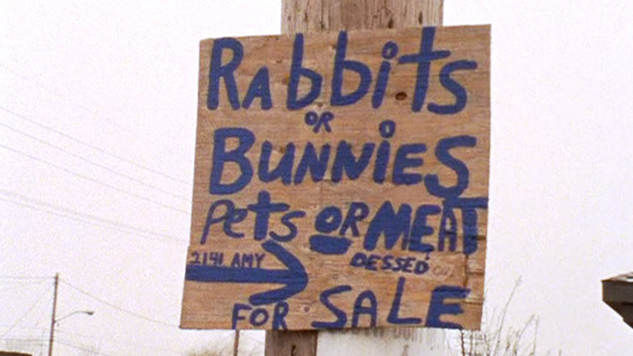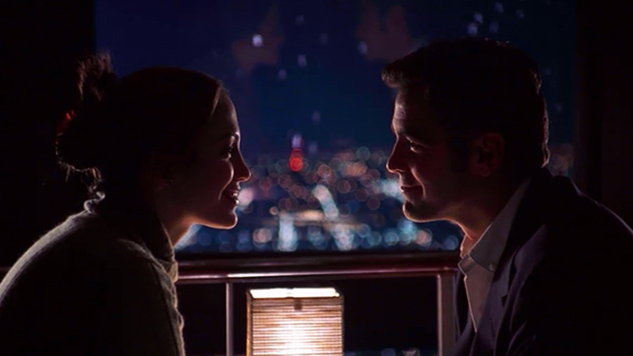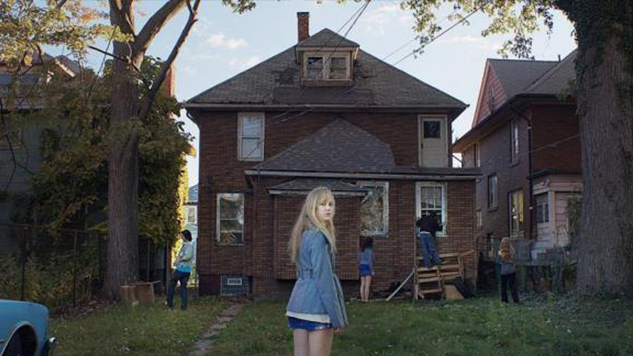The United States of Film: Michigan
20 films that map the Mitten, from the Sleeping Bear Dunes to the shores of Belle Isle
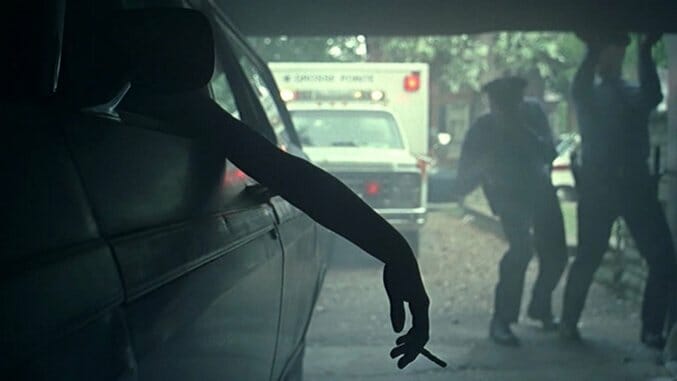
The onus of explaining Michigan is always on the Michigander—and, too often, explaining Michigan is a conversation every Michigander will have when, as many Michiganders find, they do what many Michiganders do: They leave Michigan. Because being a Michigander and explaining Michigan seem to go hand-in-hand with no longer living in Michigan, itself a sort of hypocrisy that Michiganders have to earn in order to embrace. In other words, many people who grow up in Michigan can’t wait to escape, though the reasons for their desire to escape are only theirs—and all other Americans who purport to have an opinion about why Michigan is not a good place to live will be summarily shut down by the former-Michigander.
After all, the theme for many films which take place in Michigan is that of escape. Be it the weather; the overtly institutionalized (and stiflingly casual) racism; the ever-present, looming threat of a decay from which no soul could ever return; the political corruption deeply ingrained into every single level of government; the bitter sense of martyrdom in its beleaguered citizens, insisting that the rest of the world owes them—growing up a Michigander requires inculcating these existential dilemmas, or fleeing them as soon as you can. The state motto is more of a plea than a boast: “If you seek a pleasant peninsula, look about you.” It’s as if the state’s founders intuited years to come in which so many citizens would look elsewhere for their pleasant peninsulas. And who seeks pleasant peninsulas, anyway?
That Michigan is so much more than the mitten-shaped state which stole its Upper Peninsula from Wisconsin and is home to the murder capital of the U.S. can often come as a shock to those who have no conception of the state otherwise. It’s called the Great Lakes State for a reason: Michigan can be an unrelentingly lovely place, wild and isolated the farther one ventures into the middle of the state and north towards Canada. That proximity—the oppression of hyper-urban infrastructure encroaching upon unfettered nature—allows for so many filmmakers to investigate the boundaries between such different realities. Black and white; rich and poor; historical success and historic failure: To have a life in Michigan is to forever cross one line after another.
And so there is no 8 Mile on this list, because that film sets up a real road as a fictional barrier, dumbing down very real racial tension by making it about a very fake white kid overcoming his stage fright. There is no Gran Torino here either: Clint Eastwood famously insisted on shooting the script as it was originally written, changing only the location from Minneapolis to Detroit, thereby neutering all essential Michigan-ness. There is also no The Betsy if we’re going to start cutting deeper, because the campy take on the auto industry feels like a lifetime away from the economic matters that affected so many Michiganders, nor is Jeff Daniels’ Escanaba in da Moonlight making an appearance—because it kind of ends up functionally taunting Yoopers more than giving them individual voices, even though Daniels is a beloved Michigander in his own right.
Instead, the following 20 films are the best cinematic tours into the sometimes annoyingly exclusive world of Wolverine Country. Pop open a Faygo cola, prepare to hear the flattest, most nasal accents in the entire United States, and leave behind everything you thought you knew about Detroit (that you only learned in a Time photo spread showcasing distressingly dilapidated historic buildings). If you seek a pleasant peninsula, you could do a lot worse than this one.
20. American Pie
Year: 1999
Directors: Paul Weitz, Chris Weitz
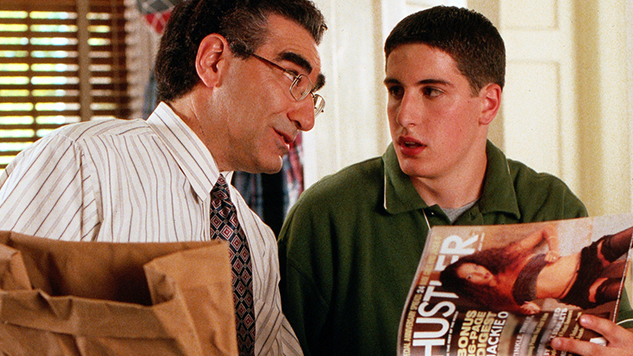
Whether you take this raunchy bildungsroman as a stalwart—one that prepped the cinematic landscape for a more commercially acceptable brand of teen-sex comedy—or as a putrid footnote that, despite its many sequels and full-blown murder of Eugene Levy’s career, absolutely does not hold up, American Pie is a surprisingly quintessential Michigan movie. Its whole premise centers around the kind of white-people middle-class malaise that makes losing one’s virginity in high school a top priority—even though you’ll see all the same people in college in a few months when everyone in your graduating class capitalizes on that in-state tuition. In this contradictory imperative, American Pie nails that particularly Michigan Midwest-ian experience: As we join Jim (Jason Biggs) and his cohort as they navigate the hormonal pressures of young adulthood and, more explicitly, whether or not to stick one’s genitals into baked goods, we sense both the need to escape—to leave Michigan and parents behind, to forge one’s identity outside of the state—and the inevitability of knowing you’ll probably end up going to the University of Michigan, Michigan State, or Western Michigan with a bunch of your friends anyway.
19. Somewhere in Time
Year: 1980
Director: Jeannot Szwarc
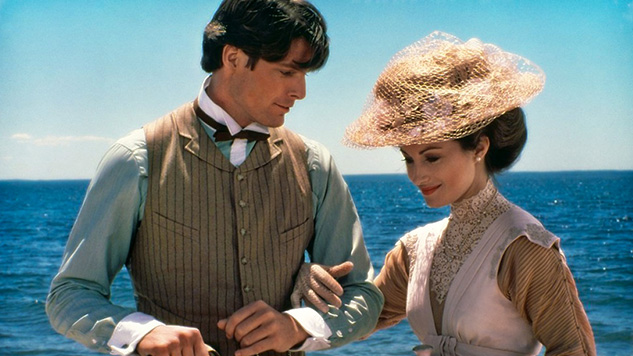
Though it’s apparently set outside of Chicago somewhere, Somewhere in Time is all Michigan’s. Filmed on Mackinac Island, a teensy piece of idyllic land, only about four square miles, between Michigan’s Upper and Lower peninsulas, the film is a romantic testament to the kind of gorgeousness Michigan’s got tucked far away from its festering urban corners. Set within the opulence of Mackinac’s historic Grand Hotel, Somewhere in Time follows Richard Collier (Christopher Reeve), an impossibly handsome playwright who, upon falling in love with the photograph of a mysterious actress (Jane Seymour, also incomprehensibly attractive) who had a residency at the hotel in the early 1900s, travels through time to meet her. In case you’re wondering how Richard achieves the impossible: He hypnotizes himself so well that his mind believes he’s time-travelled, at which point he…actually time travels? Regardless, having made the trip 60 years into the past, Richard is able to win over the actress’s heart by basically following her around like a lobotomized creep until she agrees to go on a date with him. But the real pleasure of the film—besides the masochistic ending, which is basically like Interstellar but if Matthew McConaughey died in the inky depths of space instead of reuniting with his grandma daughter—is in its sumptuous shots of Mackinac, revealing much of Michigan as an endless coastline of possibility.
18. Action Jackson
Year: 1988
Director Craig R. Baxley
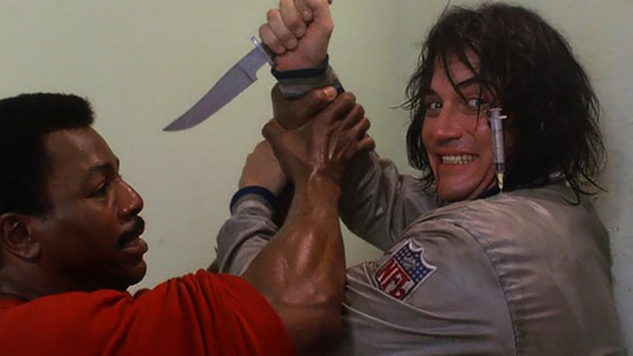
According to Carl Weathers, he gave conceptual birth to the character of Jericho “Action” Jackson while shooting Predator, inspired by a conversation he had with producer Joel Silver about their love for Blaxploitation films. In that sense, Action Jackson is sort of the essence of exploitation filmmaking infused with Hollywood pizazz, a feat that’s not so much an accomplishment as it is a curio. In it, Sergeant Jackson (Weathers), a pristinely-muscled hunk of beautiful, morally upright man meat, is two years post-demotion from Lieutenant in the Detroit Police Department, having gone a little too far with his idealistic vigilante justice, earning the distaste of billionaire car industry executive Peter Dellaplane (Craig T. Nelson—known to much of the world as Coach) in the process. Among a surprisingly huge coterie of characters, Sharon Stone shows up as Dellaplane’s believably frazzled wife, while excellent character actor Bill Duke plays Jackson’s superior, the Pynchon-ly named Captain Earl Armbruster, with a steely resignation.
As any exploitation film’s hero’s often wont to do, Jackson doesn’t let his pencil-pushing duties get in the way of a good hunch, and so—following the murder of a friend caught up in Dellaplane’s scheme to undermine the power of the City’s largest auto workers’ union—Jackson punches, wisecracks, dances, and even flying-somersaults his way through Detroit, aiming for one last battle with Craig T. Nelson. So, yes, this movie is worth watching if only for witnessing Craig T. Nelson perform some impressive high kicks (also: my god, man, your eyebrows are inimitably on fleek), but its odd hybridization of ’80s gloss and exploitation shamelessness offers a refreshing take on the Detroit popularized during the decade. Far from the hopeless desolation of Blue Collar or the plain-ole-dirty charm of Beverly Hills Cop, Craig Baxley’s Detroit is bustling—filled with vivacious characters and overcrowded commercial districts. None of it is clean per se, but it isn’t the post-apocalyptic desert so many other movies insist on making it to fuel their ruin porn fantasties. Plus, tune in for a subperbly cheesy soundtrack from an undoubtedly coked-out Herbie Hancock.
17. The Crow
Year: 1994
Director: Alex Proyas
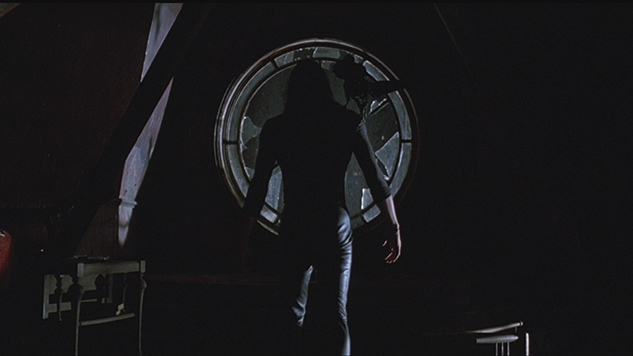
Though Detroit is never mentioned once—at one point a dedicated freeze-framer could even catch a glimpse of the escutcheon on a police cruiser, which is not that of the DPD—The Crow begins on “Devil’s Night,” the night before Halloween, a term which primarily derives from over a decade’s worth of annual vandalism and arson on that evening in Detroit. Other clues lend Alex Proyas’s gothic cult classic a place within the Motor City, but the cityscape in which Brandon Lee’s Eric Dravin flits from rooftop to rooftop, makeup supernaturally intact—sidenote: though his apartment was totally destroyed by the same hoodlums who threw him through a window and left his girlfriend for dead, they never once touched his makeup table and selection of rock star ghost-foundation and black lipstick—is hilariously bleak, a sort of Hot-Topic-toned cousin to something from Hermann Warm’s wettest of dreams. That it also happens to be a phantasmagoric shadow of Detroit says so much about the city in even the most emo corners of our collective cultural consciousness: Here be monsters.
16. Blue Denim
Year: 1959
Director Philip Dunne
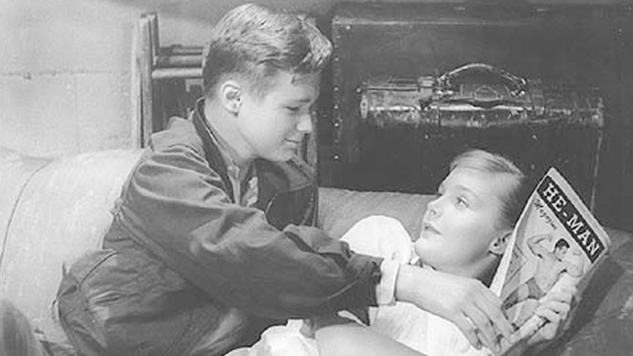
Still not widely available for most home consumption due to battling decades of Fundamentalism and supposed “controversy,” Blue Denim is a relatively sedate tale of two high school innocents in Dearborn, Michigan who, after indulging their carnal appetites, catch a glimpse of the grotesque world of illegal abortions. Originally a successful, if “shocking,” Broadway play by James Leo Herlihy, Blue Denim’s film version tempered the play’s bleaker ending and removed the word “abortion” altogether—but even then it met such indignation amongst religious groups and production codes alike that it wallowed in obscurity. Still, in director Philip Dunne’s hands, the film’s story nimbly portrays the Metro Detroit of the 1950s as a place where a nascent middle class—rife with auto industry money, building a suburban utopia apart from the grimy inner-city—did all they could to stay naïve of the darker side of any economically booming center. As our young couple, Arthur (Brandon deWilde) and Janet (Carol Lynley), try to seek help from their parents, only to find people unwilling to entertain the truth of what’s happening under their noses, the two come to the realization that the idealistic haven of their youth has been little more than an illusion.
15. Detropia
Year: 2012
Directors: Heidi Ewing, Rachel Grady
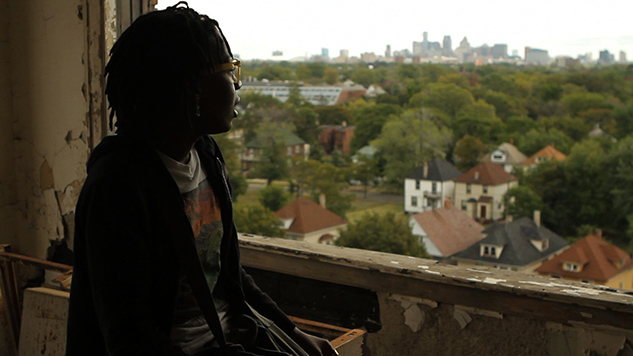
Detropia paints a modern likeness of the City of Detroit as the United States’ greatest failure, and perhaps its most representative example of the untenable nature of the so-called American Dream. But the film is rarely as big as it’d like to be. Though there’s something there to dissect about the dissolution of the middle class—how that doesn’t really mean much of anything anymore—directors Heidi Ewing and Rachel Grady can’t seem to get past a melancholic tone and make a serious case about American exceptionalism dooming the rest of the country in the same way. As such, the documentary treads water miserably, offering no real institutional solutions—or even ideas—as part of its insider’s look at City government. And yet, basic facts are brutal: How in 1955, 1.86 million people lived in the city, but by the time the film was made, there were less than 800,000 people; how there are currently 40 square miles of vacant land within city limits. Detroit is simply too big, and the film struggles underneath that weight. Ewing is from Detroit suburb Farmington Hills, and as someone who also grew up in the area, I recognize sincerity and possessiveness in the way the film chronicles the city’s current plight. Which is maybe why, despite all of the despair and slow-burning nightmares and wreckage it portrays, Detropia ends on a hopeful beat, more of a lullaby than a soundless death throe. It’s quite beautiful.
14. Detroit 9000
Year: 1973
Director Arthur Marks

By all accounts the first exploitation film set in the undeniably exploitation-ready city of Detroit, Detroit 9000 (later renamed Police Call 9000 for no discernible reason) isn’t so much a well-plotted crime thriller as it is a circuitous tour of a major city bound to bust its seams. Billed as a violent cop drama set in “the murder capital of the world” (oof), the film—which went on to achieve cult status care of Quentin Tarantino’s boutique distribution imprint, Rolling Thunder—begins with a heist during a prominent black politician’s campaign fundraiser for Michigan governorship, a crime which eventually reveals layer upon layer of corruption in every facet of Detroit urban life. Two detectives, one white (Alex Rocco) and one black (Hari Rhodes), are paired to take on the high-profile case, their obvious racial tension only heightened by the fact that, with experience in such a police department, mistrust comes as second nature. As with any good piece of exploitation cinema, the duo navigates a panorama of crude and quirky characters alike—including the hooker with a heart of gold, the lascivious politician’s aid with more on his mind than winning, and the institutionalized omni-racist—but the film’s truest account of Detroit is one of malevolence, of corruption permeating every membrane, or dismembered bodies surfacing in the Detroit River. (Which, true story: my brother works for the Coast Guard in Detroit, and he’s seen the exact same tidings of unmitigated evil floating in the wake of his boat on the river.) Who knew that barely two years after he was born, a film would so easily predict how thoroughly a leader like Kwame Kilpatrick would exploit a broken political system in a broken city to dismantle both even further?
13. Zebrahead
Year: 1992
Director: Anthony Drazan

What you think will happen in Anthony Drazan’s Zebrahead is what does happen—but whatever does happen is done with so much subtle grace, so much warmth for its characters, so much care for what Detroit could be, that any predictability quickly and quietly gives way to a vital pulse, one stippling beneath the more obvious watercolor of Detroit’s dire racial divide. While Curtis Hanson set up 8 Mile as the irrefutable border (it’s not) between two races, two cultures and two ways of being, in the end giving credit to the white guy (Eminem) for breaking down those borders by proving that he’s just as good at rapping as black people, Zebrahead admits that there are miles and miles of gray between the black and the white. The story of a Jewish, tow-headed, “Bart-Simpson-looking-motherfucker” with a penchant for hip-hop production (a baby-faced Michael Rappaport) who falls for the cousin (N’Bushe Wright) of his best friend (Deshonn Castle), Zebrahead offers no answers and no saviors for the problem at the core of the young couple’s courtship: He is black and she is white. And when violence inevitably erupts because of their pairing, no one but the two of them step up to blame the tragedy on anything but the belief that they left their individual “tribes” for taboo. Nearly 25 years later, Detroit is arguably more divided than ever—and it’ll take so much more than a plucky white kid crossing a street to bridge that gap.
12. Beverly Hills Cop
Year: 1984
Director Martin Brest

Most of Beverly Hills Cop is spent so obviously far away from Detroit—duh—that it’s hard to believe that, in Martin Brest’s head, the city is anything more than a dank cesspool where the last remaining good guys—the police, mostly—have to operate so far out of the book that they’re an increasingly hopeless breed. And so, once Axel Foley’s (Eddie Murphy) low-life friend is murdered, setting the brisk plot into motion, the film flees with the Detroit cop to Beverly Hills—duh—where Foley meets up with a childhood friend, a fellow Michigan ex-pat (Lisa Eilbacher). As a person who ran away from the Detroit area at a young age, I recognize the weirdly escapist undercurrents in Axel’s pilgrimage. I saw it in many people I grew up with, people who felt like Michigan’s, and especially Detroit’s, ills were too big, too unwieldy, to be all that one life should know. And yet, Axel is a good cop because he’s a Detroit cop, his Michigan-ness making him special. So, he knows he has to return to Detroit once business is settled, even though he knows he’d have a much easier life in California. Those of us who’ve stayed gone, we still, every once in a while, feel the need to go back, wrestling with an obligation to see such an obligation through.
-

-

-

-

-

-

-

-

-

-

-

-

-

-

-

-

-

-

-

-

-

-

-

-

-

-

-

-

-

-

-

-

-

-

-

-

-

-

-

-



